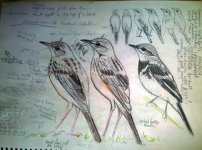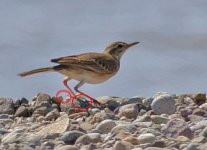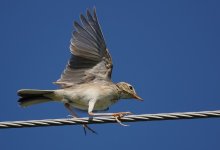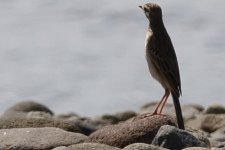I think you are looking for answers that none of us can give, Valéry, because none of us saw the bird in the field.
We cannot assess the call because there is no sound recording.
We cannot evaluate its behaviour because there is no video, and anyway I doubt that behaviour is of much help in this case. Resident birds are certainly capable of flying too.
We can only assess the bird from the two poor pictures you provided, and in these the bird does not look different from Paddyfield Pipit, so the response "It looks like a Paddyfield Pipit" is just an honest one and also the most logical since it is the expected species in that location.
The question of subspecies is an interesting one but I do not know if single individuals can be identified down to subspecies level in the field. I doubt it.
We cannot assess the call because there is no sound recording.
We cannot evaluate its behaviour because there is no video, and anyway I doubt that behaviour is of much help in this case. Resident birds are certainly capable of flying too.
We can only assess the bird from the two poor pictures you provided, and in these the bird does not look different from Paddyfield Pipit, so the response "It looks like a Paddyfield Pipit" is just an honest one and also the most logical since it is the expected species in that location.
The question of subspecies is an interesting one but I do not know if single individuals can be identified down to subspecies level in the field. I doubt it.







